Betty Boop – still popular today – made her dizzy debut on 9th August 1930, in “Dizzy Dishes“, one of the Talkartoons animated shorts produced by Paramount Pictures-owned Fleischer Studios.
The character, originally a sexy canine caricature of a Jazz Age flapper, was the creation of Grim Natwick, achieving worldwide fame by 1932, after Paramount Pictures, who rescued Fleischer Studios from bankruptcy in 1926, urged the Fleischer Studios to develop the concept.
Originally the boyfriend of Fleischer creation Bimbo, Betty Boop has spun off into comic strips prolific mass merchandising and an award-winning Broadway musical since her debut.
Under current US copyright law, Betty is due to enter the public domain on 1st January 2026.

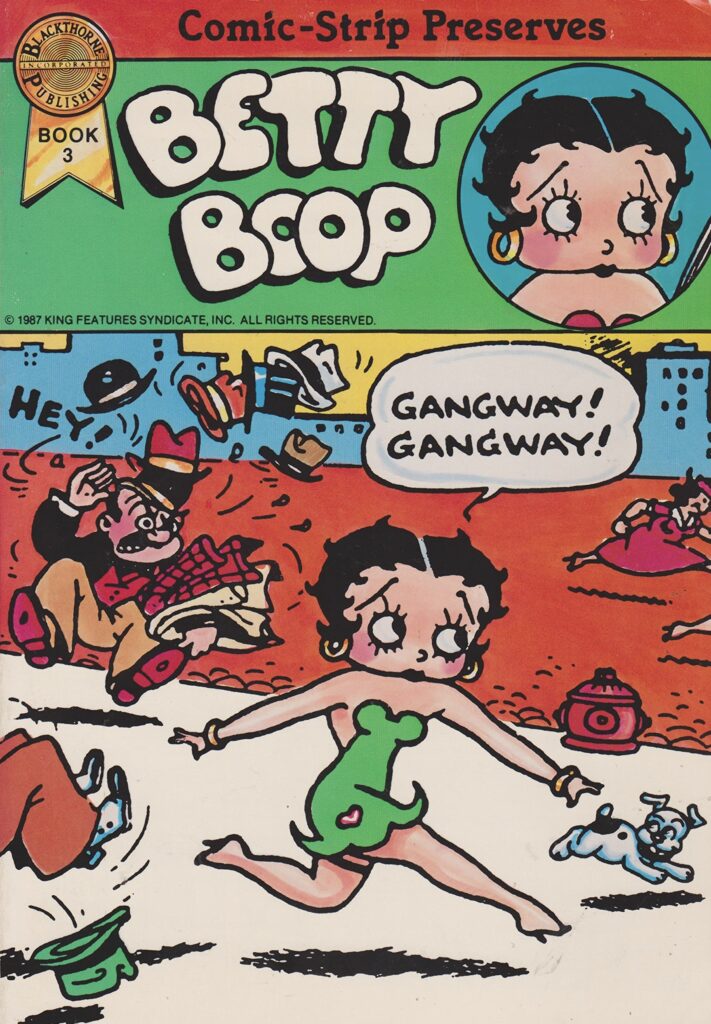
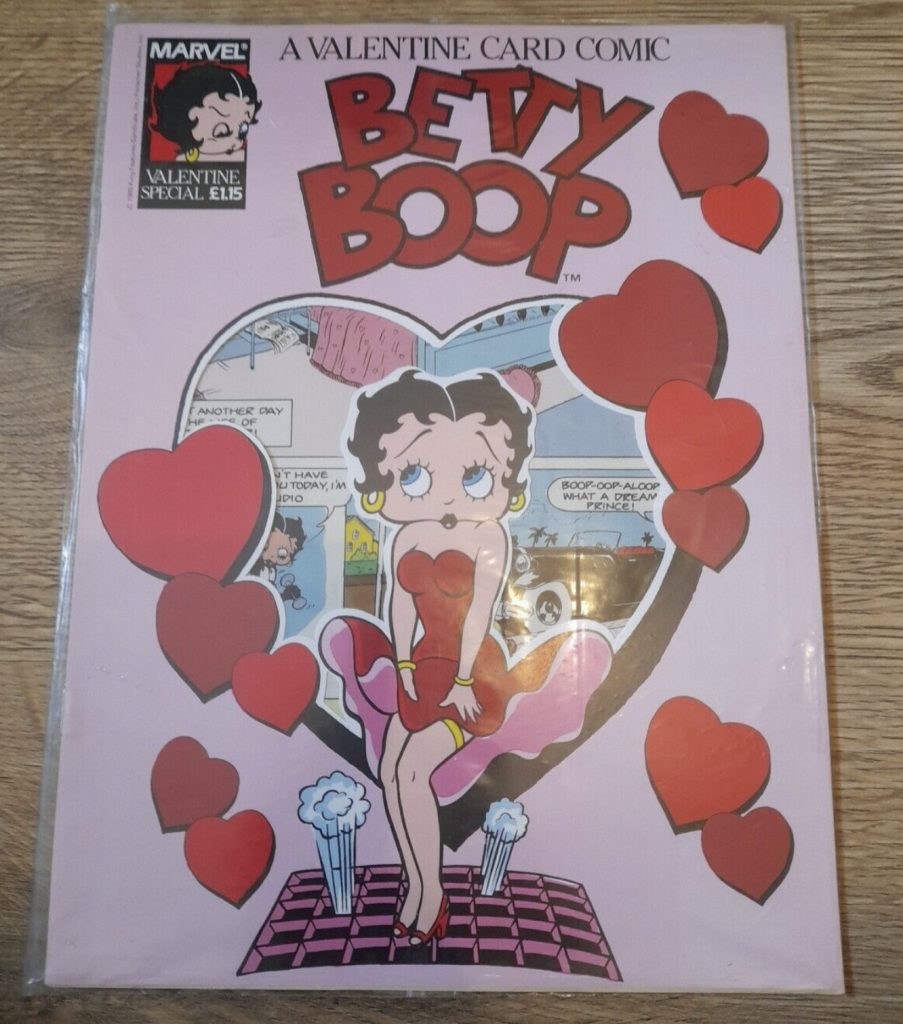
Modelled on the look of contemporary stars such as teenage vaudeville singer turned adult pop star Helen Kane (who, in 1934, sued Fleischer over the signature “Boop Oop a Doop” line), Mae Questel, who returned to voice her in Who Framed Roger Rabbit in 1988, is regarded as giving the character her “definitive” voice. But she was originally performed by actress Margie Hines between 1930 and 1932.
(The original Betty Boop was also voiced, on occasion, by actresses Bonnie Poe, and Little Ann Little who, like Margie Hines, Mae Questel, got the role of Betty Boop from a Helen Kane look and sound-alike contest).
Margie Hines began work for the Fleischer Studios in May 1930, voicing Betty up until and including “I’ll Be Glad When You’re Dead You Rascal You”, produced in 1932, before signing a contract with Fleischer Studios “rival” the Van Beuren Studios, to voice their animated characters instead.
Her most notable character for Van Buren was “Countess Cat”, created by Paul Terry, another hugely popular character, on screen and beyond in the 1930s, often paired up with her boyfriend Waffles Cat. Countess Cat also featured in the Aesop’s Fables series.
Hines later returned to the role of Betty Boop in 1938 and 1939, when the last, toned down cartoons in the character’s original run were produced.
Hines, born in Glendale Queens in New York City, also voiced Olive Oyl in early Popeye cartoons, and was briefly married to the voice of Popeye, Jack Mercer.
She died in 1985, but she was not remembered, as she had quit show business during the 1940s, vanishing from the limelight.
Betty Boop’s enjoyed early success, no doubt helped by memorable and surreal Talkartoons such as “Minnie the Moocher”, featuring Cab Calloway and his orchestra, produced in 1932, but the character fell foul to the National Legion of Decency and the Production Code of 1934, which imposed guidelines on the motion-picture industry and placed specific restrictions on the content to which films could refer with sexual innuendos.
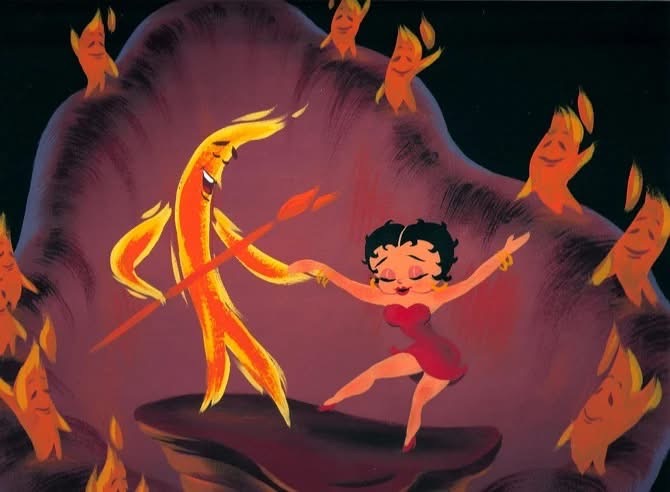

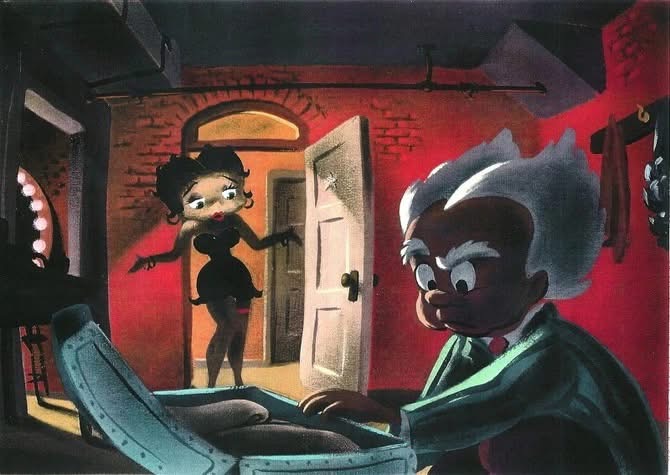
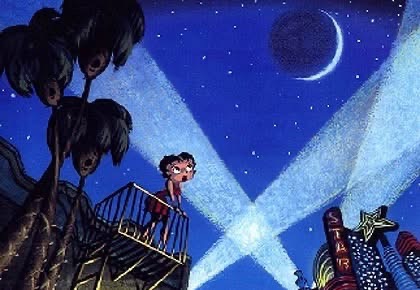
But although toned down to be more modest, Betty Boop has become one of the world’s best-known and most popular cartoon characters, alluring and entertaining for generations, walking a tightrope between being seen as a creature of both innocence and temptation.
Let us raise a glass to all those who made her a success – both the acknowledged and overlooked!
Head downthetubes for..
HubPages: “Who Is the Real Betty Boop?”
Koriander Bullard tells the story of the Helen Kane court case. After an April 1932 issue of Photoplay magazine directly called out Kane’s cartoon doppelganger, she filed a lawsuit against Fleischer Studios, but the trial would not take place until April 1934.
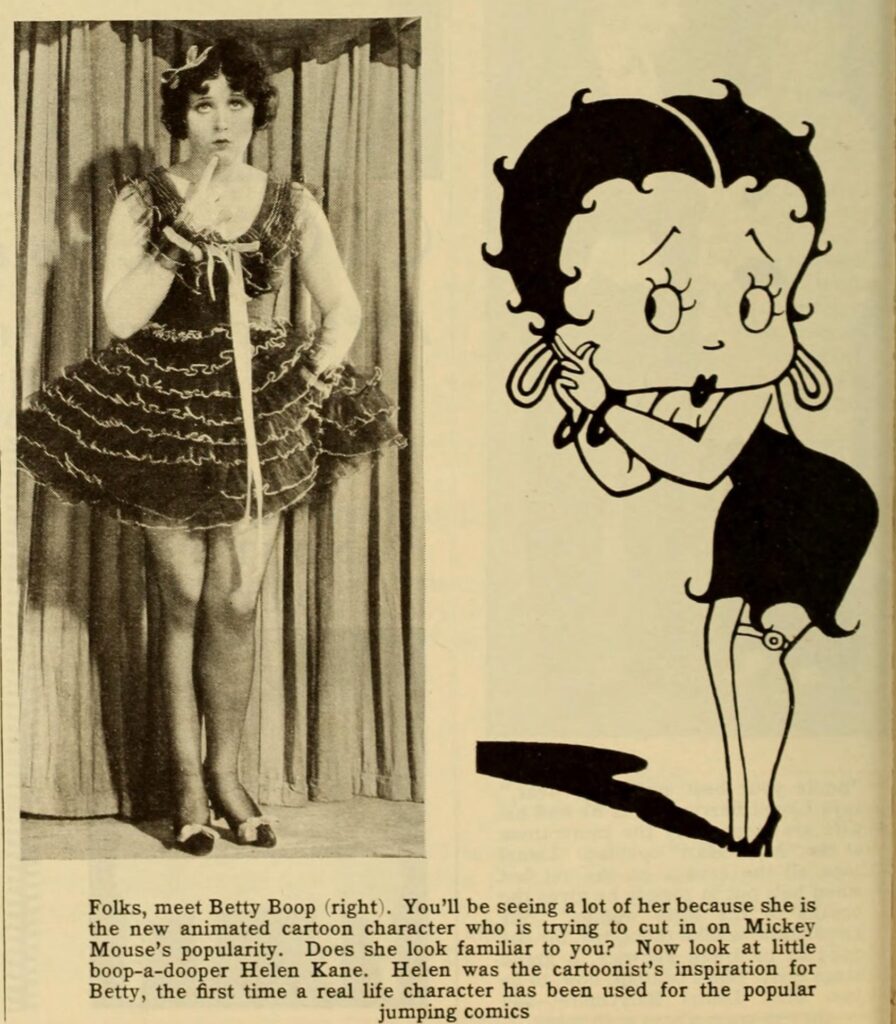
By this time, Paramount dropped Kane, and it was rumoured that they specifically chose to elevate the eternally young Betty Boop so they wouldn’t have to pay Kane, who was already 30 by the time the trial took place and whose career started to decline as the flapper trend waned. It seemed it would be easy for Kane to prove in court that Paramount and the Fleischer Studios had taken almost all of Betty from her image and style.
But the court case produced an unexpected twist and, judged on today’s mores, involves a story of egregious cultural appropriation of two black music performers, Baby Esther and Florence Mills…
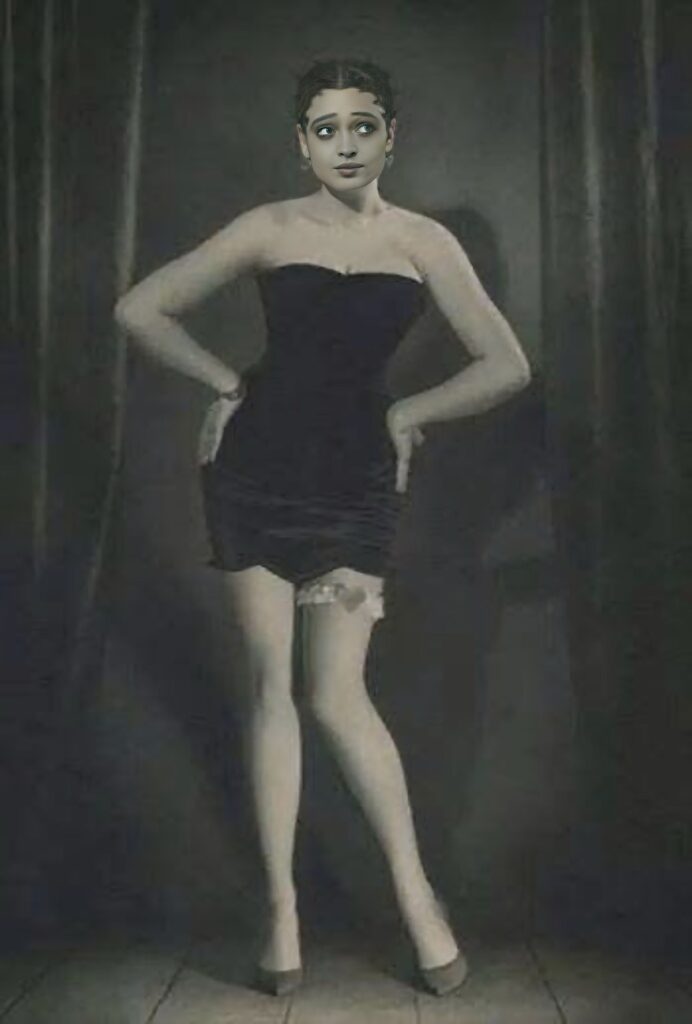
• Fleischer Studios – Finding Her Voice: Betty Boop
Betty Boop’s voice is one of her most iconic and identifiable features, and six different women voiced the role of Betty during her heyday in the 1930s

• The Smithsonian: The Evolution of Betty Boop by Emily Wishingrad
Film censorship sparked the beloved cartoon character’s mid-1930s makeover
• Ink-Slinger Profiles: Bud Counihan
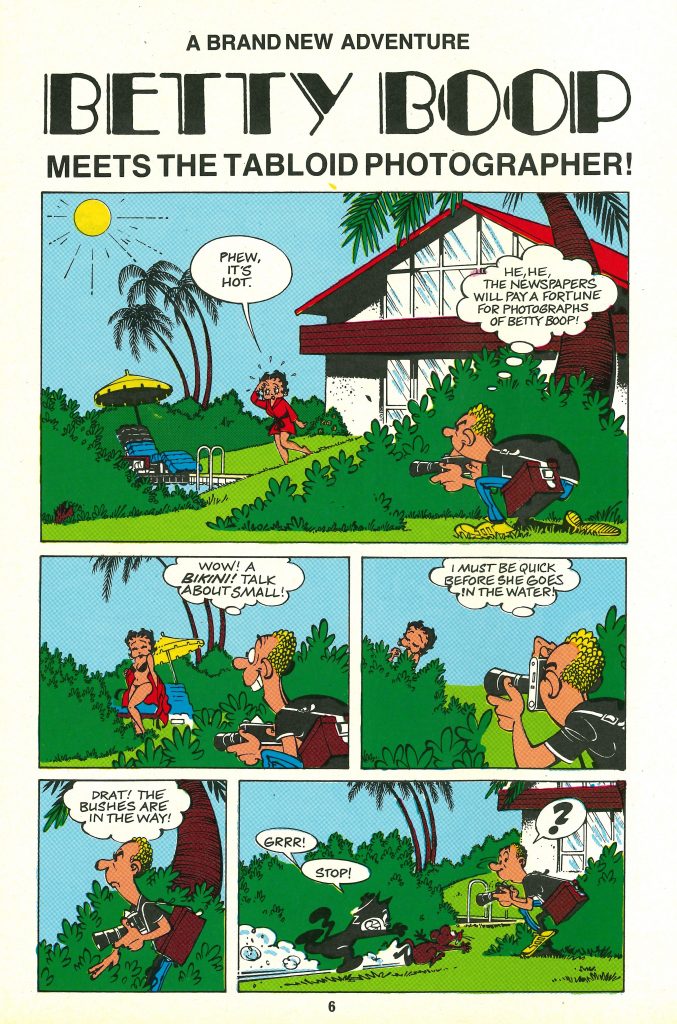
• downthetubes: Marvel UK’s Mystery European Strips – Can You Help Identify Them?
• downthetubes: From Cents to Pence: Can You help solving a “Betty Boop” Marvel UK mystery?
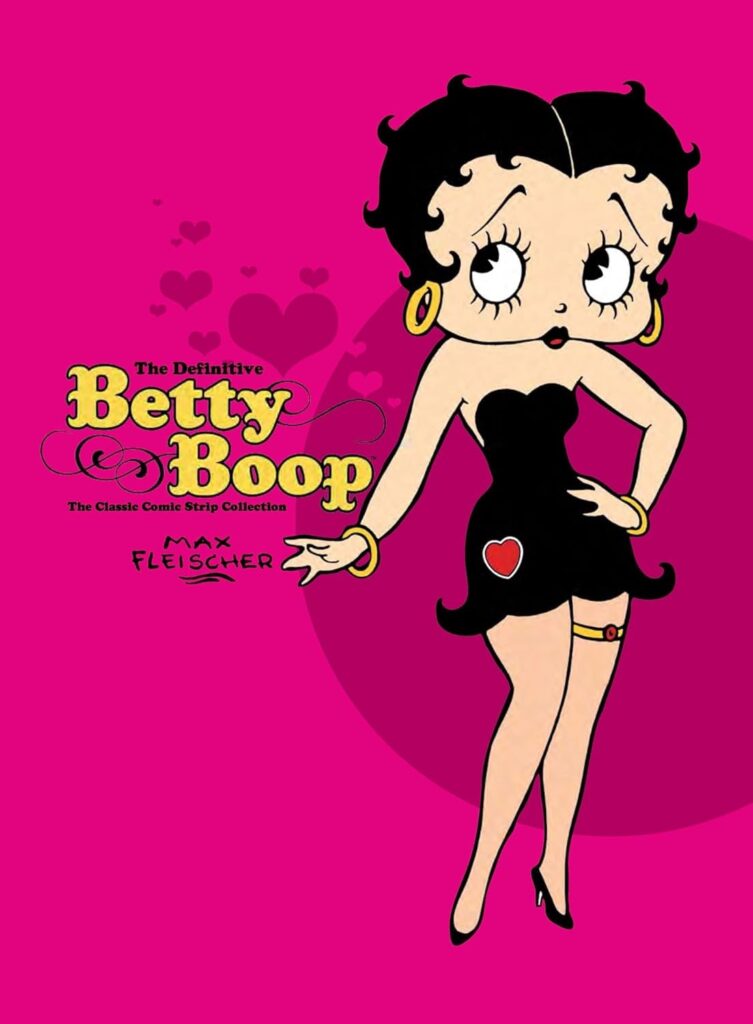
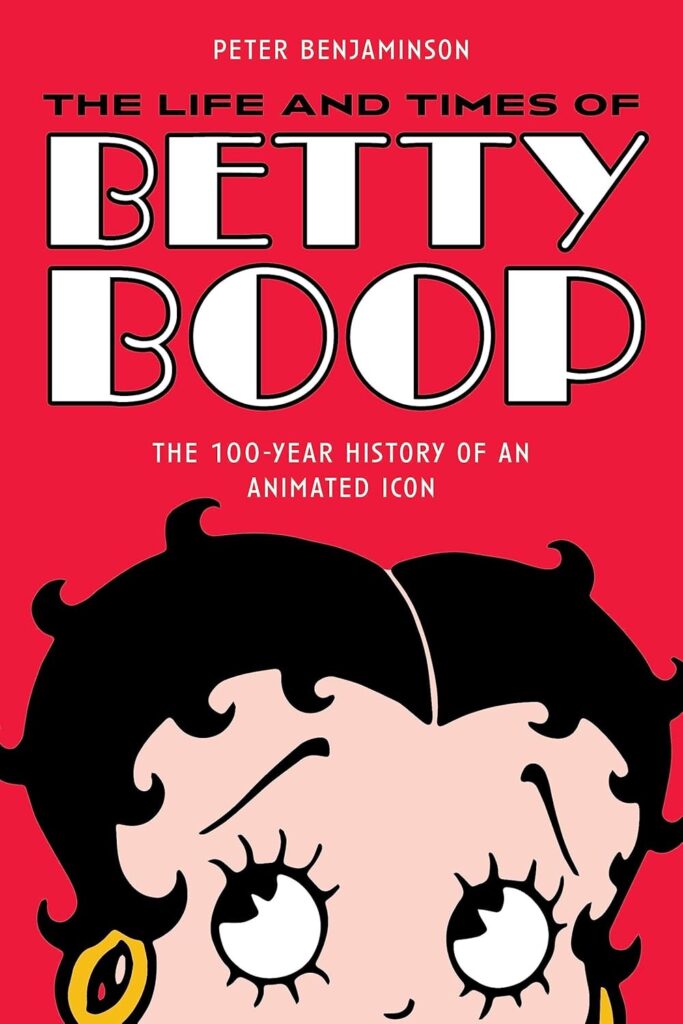
Before Marilyn and Madonna, Betty booped and wriggled her way into hearts worldwide with her unique mix of wide-eyed innocence and powerful cartoon sensuality. Betty Boop remains animation’s first leading lady and a glamorous international icon. This collects all of Betty s adventures that appeared in the funny pages of daily newspapers in the 1930s.
• The Life and Times of Betty Boop: The 100-Year History of an Animated Icon by Peter Benjaminson (AmazonUK Affiliate Link)
The first biography of a major American cultural symbol ever written, Betty Boop: The Most Popular Female Comic Strip and Cartoon Character of All Time describes Betty Boop’s incredibly active romantic and family life as revealed in her numerous comic strips, comic books, cartoons, and movies since 1930.
Award-winning author Peter Benjaminson details the creation of Betty Boop, based on two African American female entertainers who were the human models for Betty’s character. He explores the many alterations of Betty’s appearance, attitudes, and behaviour over the years. Benjaminson also reveals the stories of the women who provided her with a speaking and singing voice, along with the backgrounds, intentions, and careers of Betty’s numerous creators and animators.
Betty Boop indulges in the controversies surrounding the character, including her adventures with Felix the Cat (a four-year daily comic strip production).
Benjaminson illuminates social trends that have kept Betty popular for nearly a century, including her recent transition from a helpless sex object to a feminist icon and her massive popularity with young American women.
Categories: Animation, Comics, Creating Comics, downthetubes Comics News, downthetubes News, Other Worlds, US Comics
 Creating Comics: Alex Toth’s advice to artists
Creating Comics: Alex Toth’s advice to artists  Los Angeles Wildfires: Artist, Animation and Star Trek fundraisers, “LA Strong” charity comic in the works from Mad Cave Studios
Los Angeles Wildfires: Artist, Animation and Star Trek fundraisers, “LA Strong” charity comic in the works from Mad Cave Studios  Comics Abroad: A Visit to the Cartoon Art Museum, San Francisco
Comics Abroad: A Visit to the Cartoon Art Museum, San Francisco  American comics publisher Dark Horse bought by Swedish gaming company Embracer as part of billion kronor expansion
American comics publisher Dark Horse bought by Swedish gaming company Embracer as part of billion kronor expansion